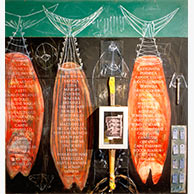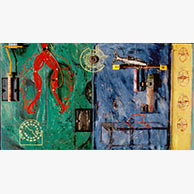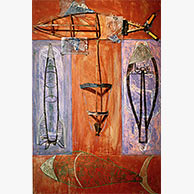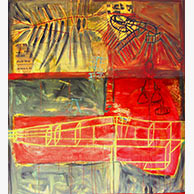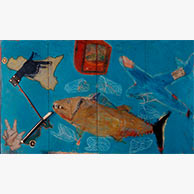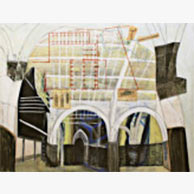Le Tonnare
1997, Mixed media on wood
In 1997, Fels traveled to Favignana, the small island off the coast of Sicily, to research the historic Bluefin fishery there. He created a series of paintings for the project. The Arabs and Greeks began capturing the migrating tuna close to shore of the island thousands of years ago with their ingenious fish traps. The ancient practice continued essentially unchanged to present day. The Bluefin is the fastest swimmer in the sea, and the fishermen designed net ‘rooms’ to be placed in their path. Slowed down and corralled, the big powerful fish were surrounded by men standing in small boats who speared them. It was very dangerous, very bloody, very ritualistic work.

The speared fish became canned tuna, processed in Favignana in an historic establishment designed by Palermo’s leading architect and financed by one of Sicily’s richest industrialists (grown wealthy from marketing Marsala wine to the British navy). The Bluefin no longer migrates past Favignana, now nearly extinct from drastic overfishing at sea for the outrageously lucrative Japanese sushi market.
The tonnare project was preceded by two years spent in Penang, Malaysia looking into the production of rubber and tin, and followed by examination of nascent salmon farming in the Pacific Northwest. For that project Fels created the mechanical ‘Industrial Fish’ for Seattle’s Museum of History and Industry. These were the first in a long series investigating the relationship of commodity to culture.

